Alexander, Robert Wilfred
Killed in Action 1944-09-21
Service
RCAF
Unit
437 Sqn- Squadron
Omnia Passim Anything anywhere
Base
RAF Blakehill Farms
Rank
Squadron Leader
Position
Squadron Leader
Service Numbers
J/2833
Home
 Sarnia, Ontario
Sarnia, Ontario
Born in Norwich, Ontario, 1920, home there or Paris, Ontario; enlisted London, Ontario, 16 April 1940. Trained at No1 ITS, Graduated from No1 AOS, 17 August 1940 and No1 ANS, Trenton, 26 October 1940. Squadron Leader Alexander had graduated as an observer in late 1940 and completed over 50 operations in North Africa. In March of 1942 he was awarded the DFC, he then returned to Canada to re-muster to pilot. He graduated at No 5 SFTS, Brantford, Ontario in July of 1943. Distinguished Flying Cross - No.148 Squadron - Award effective 7 April 1942 as per London Gazette of that date and AFRO 611/42 dated 24 April 1942. Medal presented April 1943. The citation reads - "As an air observer this officer has carried out 51 operational sorties against the enemy. He has participated in many attacks against objectives in Libya, Syria, Greece, and in the whole Mediterranean area. Flight Lieutenant Alexander is a fine bomb aimer and an exceptionally good navigator. Over a long period he has been carrying out duties of Squadron Navigation Officer with great success and his experience as an observer combined with his ability as an instructor have enabled him to attain a very high standard of navigation in the squadron. This officer has displayed consistent keenness, coolness and determination and has set a fine example to all." Detail provided by H Halliday, Orleans, Ontario
Squadron Leader RW Alexander DFC (RCAF), Flying Officer WS McLintock (RCAF) were missing, presumed killed with no known grave. They are both commemorated on the Runnymede War Memorial.
Squadron Leader Alexander maintained control of the aircraft long enough for most of his crew to bail out
Flight Sergeant A. McHugh (Navigator), and Flying Officer J. Rechenuc (Wireless Operator) survived
Cpl AE Hall (RASC), Driver H Woodward (RASC) and Driver FGW Yeo (RASC) were killed. L/Cpl OR Jones (RASC) survived, injured
TSGNO Amendment: Originally declared missing with no known grave, Squadron Leader Alexander and Flying Officer McLintock's remains were identified in 1996 and they were buried at the Bergen op Zoom British War Cemetery, Noord-Brabant, Holland
There were four 437 Sqn aircraft lost on this Operation and date. Please see Steffin, P for Dakota KG 489, for Dakota KG 376 and for Dakota FZ 656
Dakota Mk. III KG387
Transport 1944-September-21 to 1944-September-21
(T) Sqn (RCAF) Blakehill Farm
Market Garden
USAAF 42-92599 C-47A-10-DK 28-01-44. RAF - Royal Air Force KG387 23-02-44. W/O 21.09.44. Operated by No. 437 (T) Squadron, RCAF, in the UK in 1944, coded "Z2*UF". Shot down by Fw190s 21 September 1944 after completing panier drop re-supply mission to Arnheim, one of 4 Squadron aircraft lost on this mission. 5 of 8 crew killed, including pilot Squadron Leader R.W. Alexander, DFC, rest bailed out. First 437 Squadronn fatalities on operations. Came down near Sonniushoeve (or Sonse Hedie?), Holland, south of Wilhelminacanal, near Eindhoven. Crash location also identified as near hamlet of Esp.Douglas Dakota Skytrain C-47 DC-3 AC-47 R4D Spooky Gooney Bird
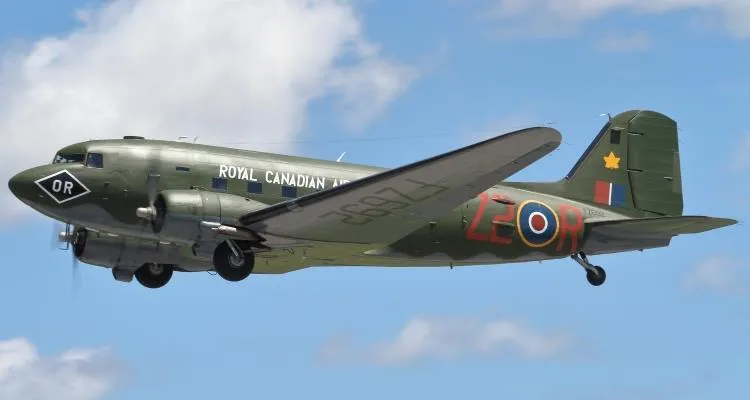
Canadian Warplane Heritage Museum
Development of the Douglas DC-3 started in early 1935 with the prototype flying by the end of the year. The first production aircraft was delivered to American Airlines in July 1936 and soon orders were pouring in from US and overseas airlines. The US Air Corps became interested in the DC-3 and ordered a military version, called the C-47 or Dakota. It had many capabilities, including dropping paratroops and supplies, evacuating the wounded, troop transportation and glider towing. Eventually, about 10,000 C-47s were built for the US military.
During WW II, the Royal Air Force received about 1,930 Dakotas and they became the RAF's main wartime transport aircraft. The RCAF took delivery of its first Dakota in March 1943, and at its peak had 169 on strength. Within Canada, they were operated by four transport squadrons and several ferry squadrons.
Overseas, Dakotas equipped RCAF 437 Squadron in Europe and RCAF 435 and 436 Squadrons in South East Asia. 437 Squadron was formed in England September 1944, where it supported the British and Canadian Armies fighting in Europe. Its most important actions involved glider towing for the airborne landings at Arnhem and the Rhine crossing at Wesel.435 and 436 Squadrons were formed in India in October 1944. They flew Dakotas in support of the British 14th Army in Burma where they dropped supplies to the British troops fighting the Japanese in the jungle.
At the end of WW II, all three squadrons were transferred back to England to provide air transport for the Canadian occupation forces in Germany. Dakotas continued in service with the Canadian Armed Forces until 1989, when 402 Squadron, based in Winnipeg, retired the last of them. Of the nearly 13,000 DC-3s built, many are still in service today, over 75 years after the aircraft's first flight.
The Museum's Dakota was built for the USAAF and was delivered to the Royal Air Force in February 1944 as FZ692 and the Royal Canadian Air Force 437 Squadron in September 1944. It was later renumbered as 12945 as part of the Canadian Armed Forces where it served with 424 Squadron for Search & Rescue at CFB Trenton. It performed JATO ignition in flight at the 1970 Canadian National Exhibition Air Show on the Toronto waterfront.
After it was struck off strength by the Canadian Armed Forces in 1973, the aircraft ended up with Environment Canada, where it was used for mineral and environmental surveys. C-GRSB was donated to the Canadian Warplane Heritage Museum in May 2014.
FZ692 has been restored to the paint scheme it would have worn at the end of World War II with 437 Squadron RCAF. FZ692 flew 208 operational trips with 437 Squadron and 16 with 233 Squadron for a total of 224. It ended up flying hundreds of individual legs between airfields in Europe. FZ692 participated in two major airborne operations, Normandy and the Rhine Crossing. It carried 298 casualties to medical aid and repatriated 456 prisoners of war. It carried over 5,100 passengers to destinations around Europe and carried over two hundred tons of freight (414,368 lbs).CWHM
 Canada Aviation Museum Dakota Overview
Canada Aviation Museum Dakota Overview
437 Sqn Omnia Passim ("Husky")
History of the Squadron during World War II (Aircraft: Dakota III, IV)
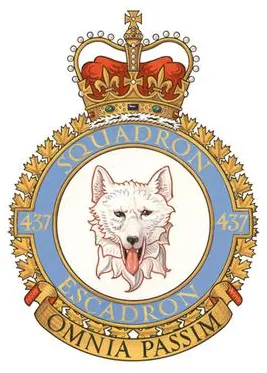
No. 437 was the 32nd RCAF squadron formed overseas in WWII. It was the first of three transport squadrons. It was inaugurated on September 14, 1944 at Blakehill Farm, Wiltshire, England . It flew Dakota aircraft, and its first operation was MARKET GARDEN, the airborne assault on Arnhem. It carried airborne troops and later was involved in resupply missions to the beleaguered Allied forces, losing 4 out of 10 aircraft involved. On 24 March 1945 the squadron took part in the airborne crossing of the Rhine river at Wesel (Operation VARSITY), towing 24 Horsa gliders with troops and equipment. After the end of hostilities the squadron provided transport services for Canadian units in Britain and Europe. It was finally disbanded at Odiham, Hampshire on June 15, 1946.
Overall, the squadron flew11,625 sorties, adding up to 32,355 operational hours. 14 aircraft were lost and 17 aircrew, of whom 2 were killed, 14 missing and 1 wounded. Awards gained by the squadron were 1 OBE, 8 DFCs, 2 AFCs 1 DFM, 1 MiD and 3 King's Commendations. Battle Honours were France and Germany 1944-45, Arnhem, Rhine.Wikipedia, Kostenuk and Griffin
Maps for Movements of 437 Squadron 1944-46
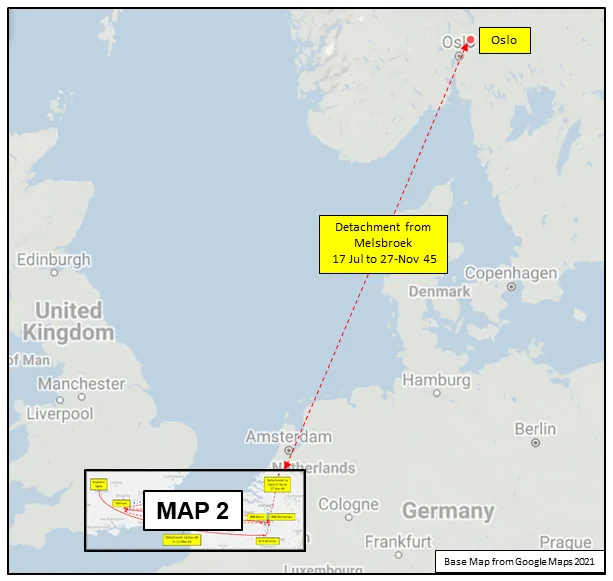 MAP 1: 437 Squadron Movements 1944-46 (right-click on image to display enlarged in new tab) | 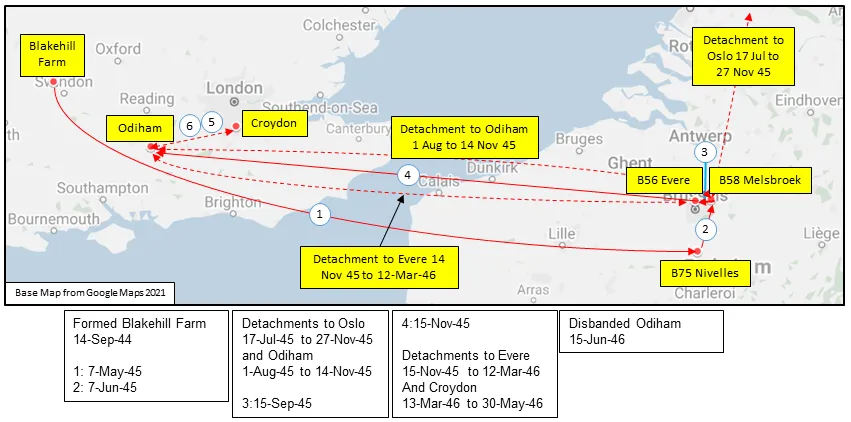 MAP 2: 437 Squadron Movements in Europe 1944-46 (detail of Map 1) |
437 Squadron History Summary 1944-46
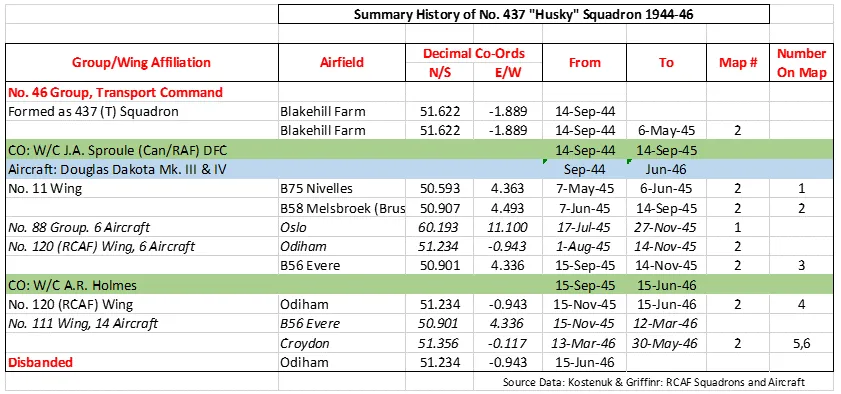
History of the Squadron Post-WWII (Aircraft: Yukon, Husky, Polaris)
The squadron was reformed at Trenton, Ontario on 1 October 1961. It has remained at Trenton ever since. It was originally equipped with CC-106 Yukon. It was re-equipped with the CC-137 Husky (modified Boeing 707) in 1972. While operating the Husky it provided Air to Air Refueling in addition to transport services. Two aircraft out of the fleet of five were modified to serve as refueling tankers in mid-1972 to meet a requirement to support the CF-5 tactical fighter. At the end of the useful life of the B707 in 1997, 437 Squadron was equipped with modified Airbus A-310 aircraft (CC-150 Polaris). The Squadron’s primary roles are long-range transport of personnel and equipment, air-to-air refueling of fighter aircraft and VIP transport. The Squadron occasionally performs aeromedical evacuation roles. Two CC-150 air-to-air refueling tankers were deployed to support Operation MOBILE during the 2011 military intervention in Libya. Canadian CF-188 fighter jets that enforce the no-fly zone over Libya under Operation ODYSSEY DAWN and Operation UNIFIED PROTECTOR were refueled by 437 Squadron.
437 Transport Squadron frequently supports government dignitaries while on official visits, including the Prime Minister of Canada and Queen Elizabeth II during Royal tours of Canada. In June and July 2011 the squadron provided transportation for the Duke and Duchess of Cambridge as they toured Canada and the United States.
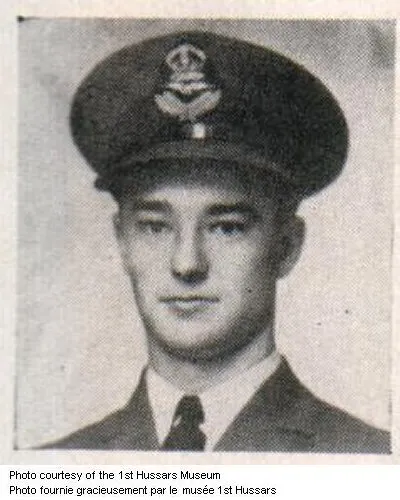


 Aviation Safety Network
Aviation Safety Network Canadian Virtual War Memorial
Canadian Virtual War Memorial Commonwealth War Graves Commission
Commonwealth War Graves Commission www.findagrave.com
www.findagrave.com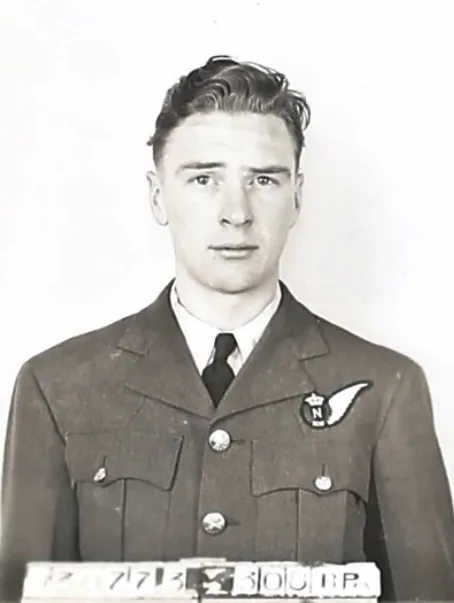
 C-47 Skytrain
C-47 Skytrain Wikipedia C-47 Skytrain
Wikipedia C-47 Skytrain